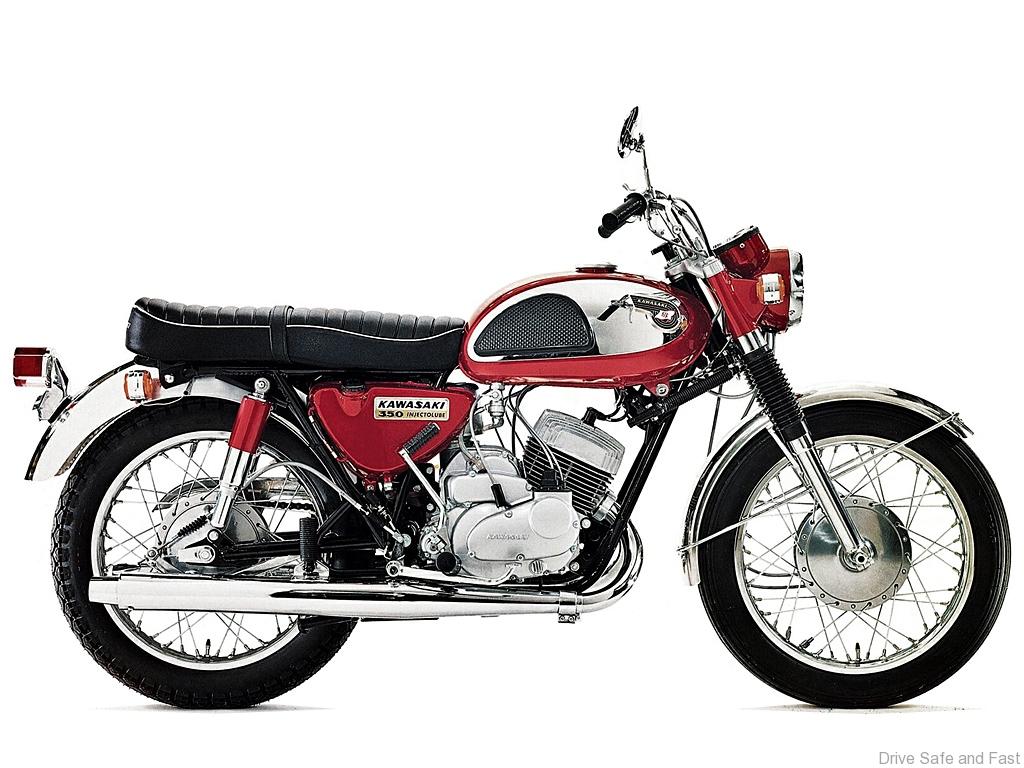Early on, Kawasaki executives quickly learned that customers wanted far more than just getting from Point A to Point B on a fun little machine. The open roads and huge continent invited bigger bikes with more performance, much more. So, in a brazen move for the time, a twin-cylinder, rotary-valve two-stroke motorcycle called the A1 Samurai was created, soon to be followed by the larger A7 Avenger.
1966 Kawasaki A1 Samurai
Both bikes were specifically designed for the United States market under the leadership of the president of American Kawasaki Motorcycle Corp., Royozo Iwaki, but before launch they needed to be proven on America’s roads. In February 1966 a factory engineer from Kawasaki Heavy Industries, Ltd. arrived with a Samurai prototype, and American Larry Beall, a future Kawasaki sponsored racer, signed on as test rider. With a budget of just USD2,000, the test ran from Oklahoma City to New Mexico, with most of the route in Texas.
1967 Kawasaki A7 Avenger
The trip was successful, and within months A1 production bikes – along with Kawasaki’s first production road racer, the A1R, began arriving at dealers. They were fast. Their performance matched that of the British bikes twice their size. Word of this performance began to spread among dealers, customers and the press. When Jim Deehan won the Open Production race at Willow Springs Raceway aboard an early A1 Samurai – the first road race for a Kawasaki vehicle –the floodgates of interest in the Kawasaki brand burst open. Kawasaki’s unique brand of daring, in-your-face attitude had arrived.
2016 Kawasaki Ninja 300
After five decades of rapid-fire growth, Kawasaki still owes a huge debt of thanks to the forward-looking A1 and A7 twins. Their success directly paved the way for the incredible 1969 500 H1 and 1972 750 H2 triples, which in turn enabled the audacious 903cc Z1 of 1973, the long line of Ninja® supersport bikes and now, the mind-bending Ninja H2™R model.
Here’s how the original A1 Samurai and A7 Avenger motorcycles compare to the current Ninja® 300 sportbike.
| 1966 A1 Samurai | 1967 A7 Avenger | 2016 Ninja 300 | |
| Engine: Displacement: Induction: Cooling: Starting system: Transmission: Claimed dry weight: Brakes, front/rear: | Two-stroke twin 247cc Twin 22mm carbs Air Kickstarter 5 Speed 320 lbs Drum / Drum | Two-stroke twin 338cc Twin 26mm carbs Air Kickstarter 5 Speed 320 lbs Drum/ Drum | Four-stroke twin 296cc EFI Liquid Electric 6 Speed 362 lbs Disc / Disc |






